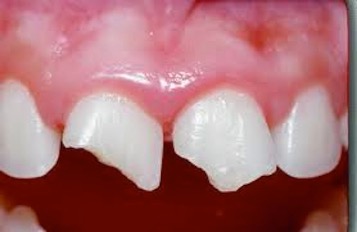Dental trauma can happen suddenly, whether during sports, a fall, or an accidental blow to the face. Knowing what to do in these moments can make all the difference in preserving a tooth, minimizing pain, and supporting a healthy recovery.
In this column, see a quick guide to managing dental trauma, with tips on how to respond to different types of injuries.
Types of Dental Injuries
Dental trauma can vary in severity and type, including:
- Chipped or cracked teeth: These injuries can range from minor enamel chips to deep fractures that reach the pulp, the sensitive inner tissue of the tooth.
- Dislodged (loose) teeth: Sometimes a blow can loosen a tooth but not fully remove it from the socket.
- Knocked-out (avulsed) teeth: This happens when a tooth is entirely knocked out from the mouth, requiring immediate attention.
- Soft tissue injuries: Cuts or lacerations to the lips, gums, or cheeks can also accompany a traumatic dental incident.
Each injury requires specific steps to ensure the best outcome. Below is a breakdown of how to manage each type.
Immediate Steps for Each Type of Injury
Chipped or Cracked Teeth
If a tooth is chipped or cracked:
- Rinse your mouth with warm water to clear any debris.
- Apply pressure if there is bleeding, using a piece of clean gauze.
- Avoid chewing on the affected side to prevent further damage.
- See a dentist as soon as possible. Even small fractures should be evaluated to ensure there is no deeper damage to the tooth.
Dislodged (Loose) Teeth
If your tooth feels loose:
- Avoid touching or wiggling the tooth to prevent additional injury.
- Use a cold compress on the cheek to reduce swelling.
- Visit the dentist immediately. They may be able to stabilize the tooth, increasing the chances of full recovery.
Knocked-Out (Avulsed) Teeth
A knocked-out tooth requires urgent action:
- Find the tooth and handle it by the crown (the white part), avoiding the root.
- Rinse the tooth gently with water if it’s dirty, but don’t scrub or remove any tissue fragments.
- Try to reinsert the tooth into the socket if possible. If it doesn’t fit, place it in a cup of milk or a saltwater solution to keep it moist.
- Seek emergency dental care immediately. Time is critical for successful reimplantation – ideally, the tooth should be back in place within an hour.
Soft Tissue Injuries
For cuts and lacerations to the gums or lips:
- Rinse your mouth with warm water to clean the area.
- Apply gentle pressure with gauze to stop bleeding.
- Use a cold compress outside the mouth to reduce swelling.
- See a healthcare provider if bleeding persists or if the wound is deep.
Prevention and Preparedness:
While accidents are often unexpected, there are ways to reduce the risk of dental trauma:
- Wear a mouthguard during contact sports to protect teeth from impact.
- Use seatbelts and other protective equipment to prevent injury during travel.
- Maintain regular dental check-ups to ensure your teeth and gums are healthy and resilient.
Follow-up Steps:
Even if initial treatment has addressed the trauma, it’s essential to schedule a follow-up visit with your dentist. They can check for any delayed complications, such as nerve damage or infection, and recommend further treatment if necessary. In some cases, a crown, veneer, or root canal may be needed to restore the injured tooth.
By taking quick action and knowing how to respond, you can effectively manage dental trauma and support a healthy recovery for your smile.
Dr. Kendal V. O. Major is Founder and CEO of Center for Specialized Dentistry which is a comprehensive family dental practice operating in Nassau and Freeport. He is the first Bahamian Specialist in gum diseases and dental implants since 1989. He also is a certified Fast braces provider. His practice is located at 89 Collins Avenue, Nassau at (242)325-5165 or [email protected].

Most common dental trauma-front teeth of young children

Stages when tooth is knocked out- broken attachment fibers





